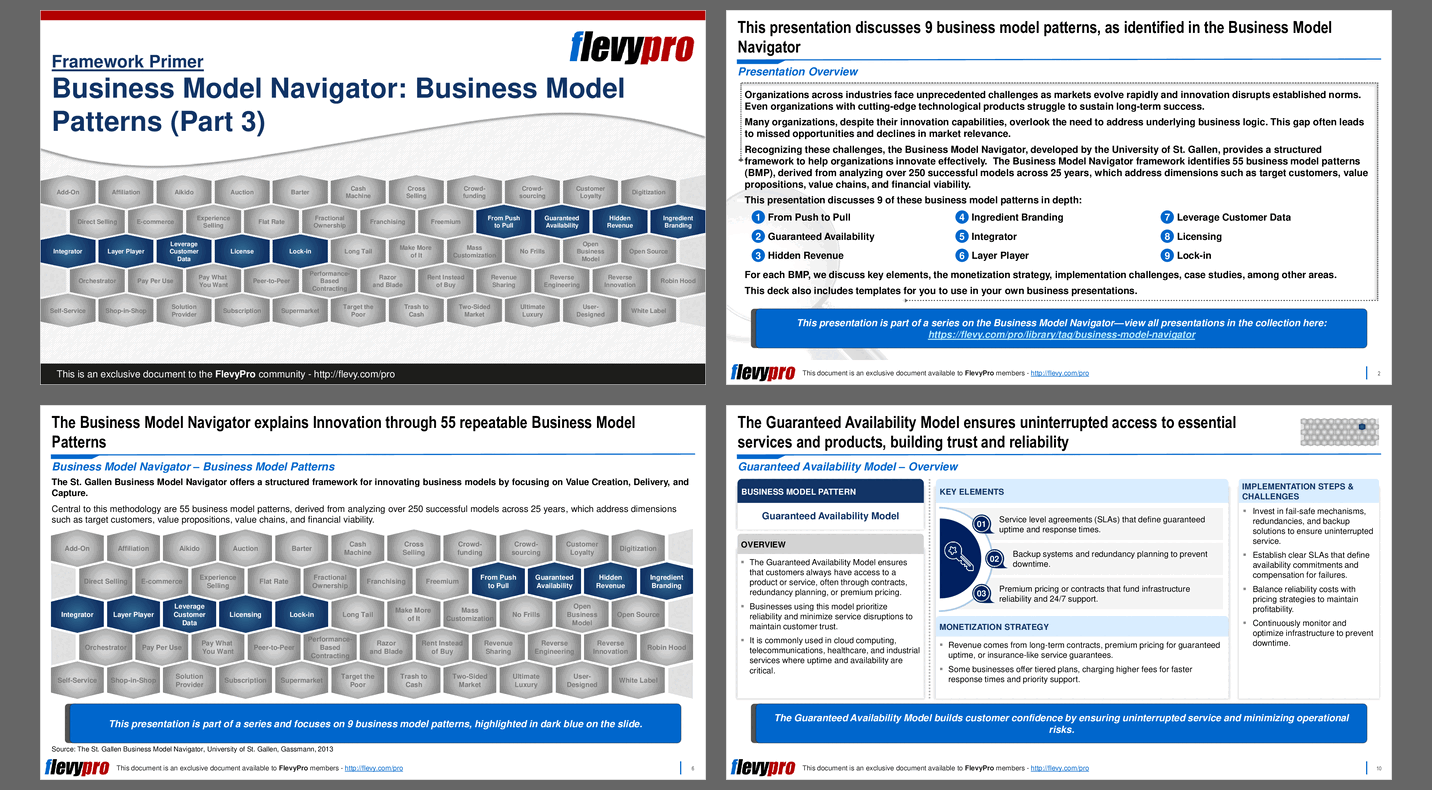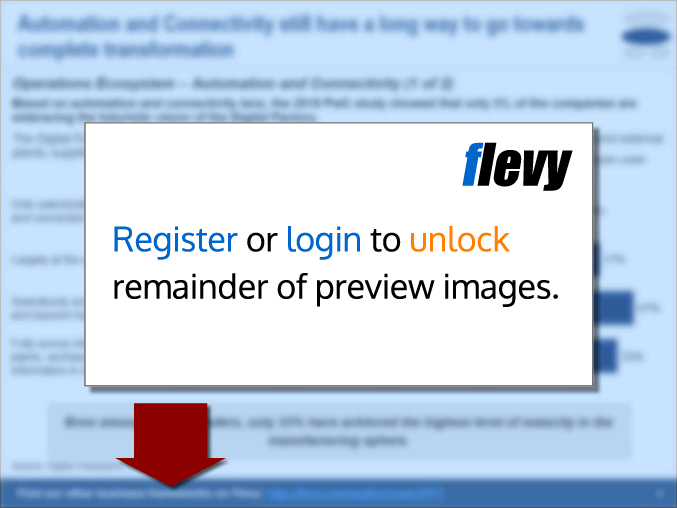Business Model Navigator: Business Model Patterns (Part 3) (PowerPoint PPTX Slide Deck)
PowerPoint (PPTX) 38 Slides FlevyPro Document
BUSINESS MODEL DESIGN PPT DESCRIPTION
Organizations across industries face unprecedented challenges as markets evolve rapidly and innovation disrupts established norms. Even organizations with cutting-edge technological products struggle to sustain long-term success.
Many organizations, despite their innovation capabilities, overlook the need to address underlying business logic. This gap often leads to missed opportunities and declines in market relevance.
Recognizing these challenges, the Business Model Navigator, developed by the University of St. Gallen, provides a structured framework to help organizations innovate effectively. The Business Model Navigator framework identifies 55 business model patterns (BMP), derived from analyzing over 250 successful models across 25 years, which address dimensions such as target customers, value propositions, value chains, and financial viability.
This PPT presentation discusses 9 of these business model patterns in depth:
1. From Push to Pull – The From Push to Pull Model replaces traditional supply chain forecasting with real-time demand responsiveness, reducing excess inventory and production inefficiencies.
2. Guaranteed Availability – The Guaranteed Availability Model ensures that customers always have access to a product or service, often through contracts, redundancy planning, or premium pricing.
3. Hidden Revenue – The Hidden Revenue Model allows businesses to offer free or subsidized services while generating revenue from third-party sources like advertisers or data monetization.
4. Ingredient Branding – The Ingredient Branding Model strengthens a product's market appeal by prominently featuring a well-known component or technology.
5. Integrator Business – The Integrator Business Model allows companies to oversee and control multiple stages of their value chain, from production to distribution.
6. Layer Player – The Layer Player Business Model allows companies to specialize in one specific stage of the value chain and provide their expertise to multiple industry players.
7. Leverage Customer Data – The Leverage Customer Data Model helps businesses collect, analyze, and use customer information to improve decision-making, personalize offerings, and drive growth.
8. Licensing – The Licensing Business Model enables companies to monetize their intellectual property by allowing external parties to use their brand, technology, or content for a fee.
9. Lock-In – The Lock-In Business Model ensures customer retention by making it difficult, inconvenient, or costly for users to switch to a competitor.
For each BMP, we discuss key elements, the monetization strategy, implementation challenges, case studies, among other areas.
This deck on business model patterns also includes PPT templates for you to use in your own business presentations.
Got a question about the product? Email us at flevypro@flevy.com.
Source: Best Practices in Business Model, Business Model Navigator PowerPoint Slides: Business Model Navigator: Business Model Patterns (Part 3) PowerPoint (PPTX) Presentation Slide Deck, LearnPPT Consulting
Did you need more documents?
Consider a FlevyPro subscription from $39/month. View plans here.
For $10.00 more, you can download this document plus 2 more FlevyPro documents. That's just $13 each.







